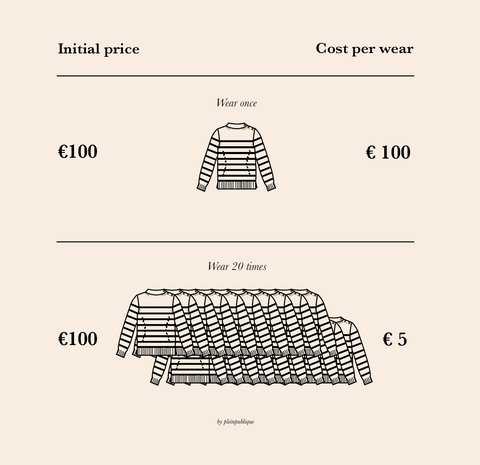|
Did you know? Shocking, right? After an average of 7 wears, a piece of clothing is relegated to the back of the wardrobe, moved from the attic to the shed or storage room via a sliding system, and finally deposited in the old-clothes-container, recycled or even thrown away. So old fashioned. Barring exceptions, the Cost Per Wear principle can help prevent bad purchases by ensuring that you make the right purchase decisions.
To pull your head back out of the clouds: not every very expensive purchase automatically has the potential to last a long time, or to remain a favorite for a long time. If you want to make the Cost Per Wear success formula successful, you have to stick to a few basic rules;
|

